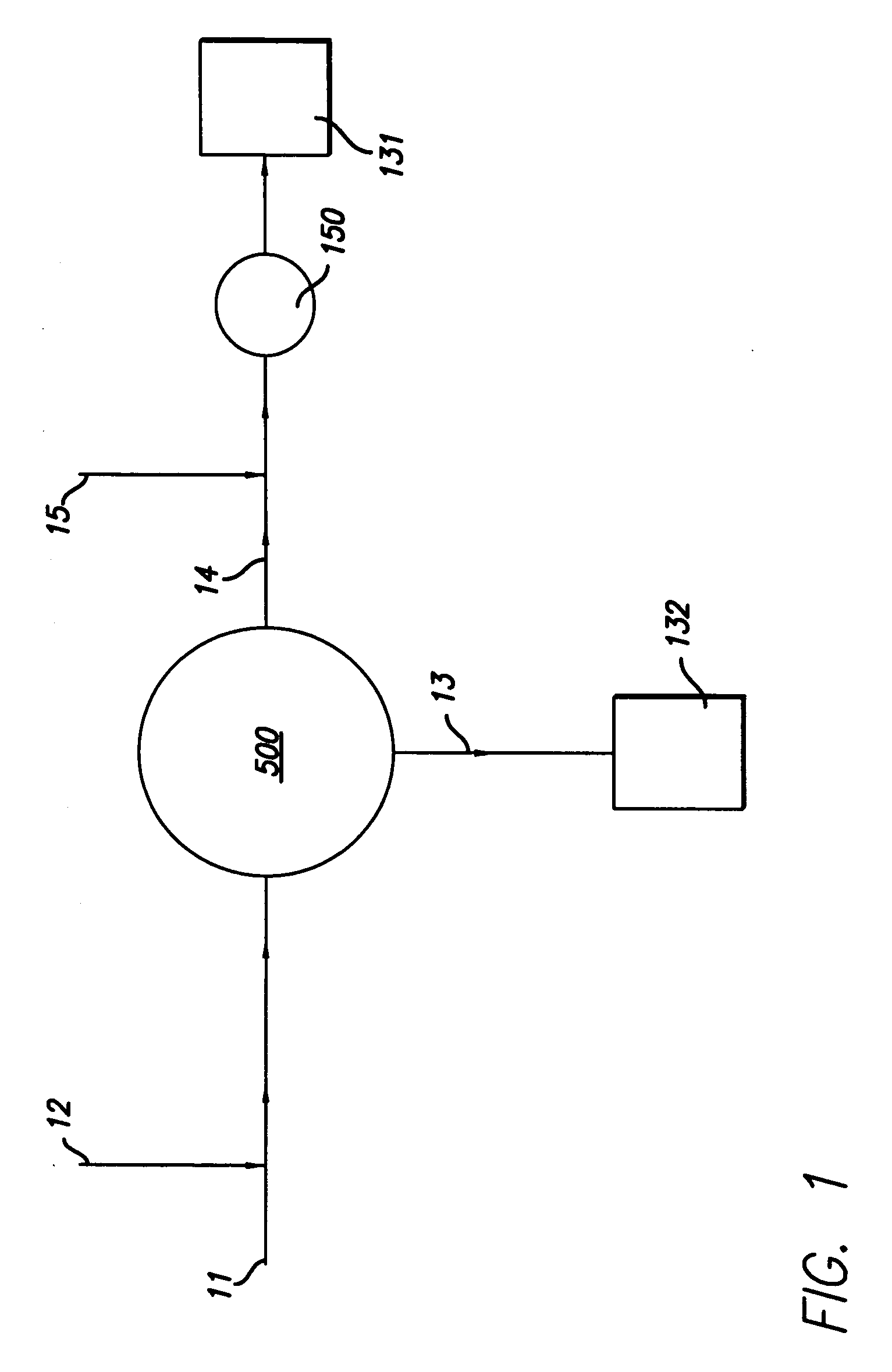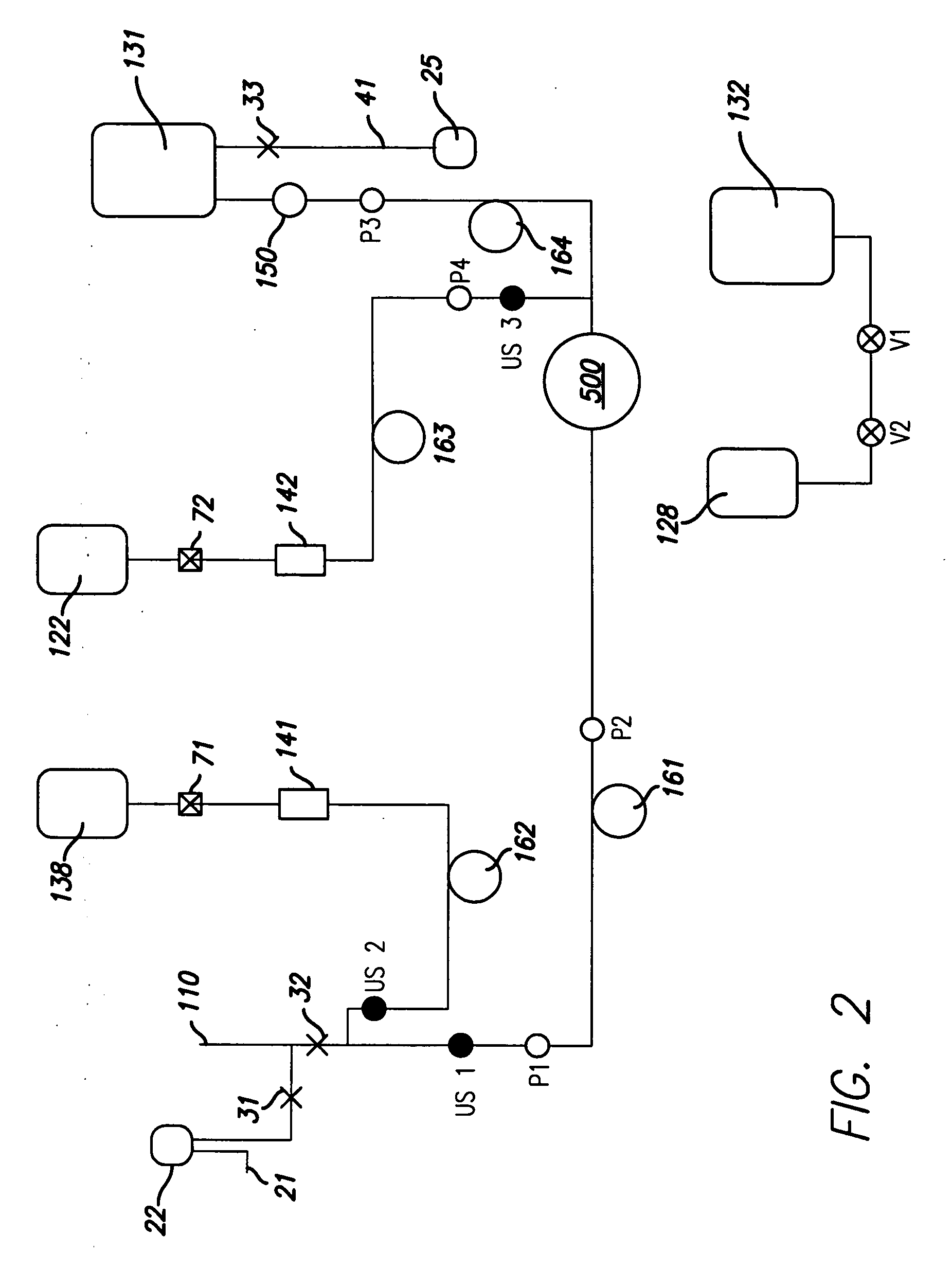Centrifuge for blood processing systems
a centrifuge and blood technology, applied in centrifuges, separation processes, filtration separation, etc., can solve the problems of low blood supply, widespread shortage of blood products, and less efficient manual methods of blood collection and separation than automated methods such as apheresis, so as to reduce direct collection and processing costs and minimize errors.
- Summary
- Abstract
- Description
- Claims
- Application Information
AI Technical Summary
Benefits of technology
Problems solved by technology
Method used
Image
Examples
example 1
A Blood Collection and Separation Process
[0124] Before blood donation begins, a disposable set is removed from its sterile package and hung on the console. Solution bags (anticoagulant, red blood cell additive solution, and saline) are attached to the console. Solution bags could be pre-attached but are assumed in these processes to be attached at disposable set-up. The solution bags may have Luer-lock or spike attachments. Bacterial (0.2 micron) filters are used in the flow paths from these bags to maintain sterility. The bags are hung in designated locations on the console. The console calibrations and system software status are performed automatically before blood donation begins. Data collection is performed manually by the user with a bar code wand reader and automatically via the console.
[0125] The processes of the present invention are automatic. The automatic process begins after the phlebotomist (user) places the access needle in the donor's vein and after the non-anticoa...
example 2
One Unit of Leukoreduced RBCs and Plasma
[0138] In one embodiment of the invention, one unit of whole blood is collected from a donor to produce one unit of leukoreduced RBCs in storage solution and plasma. This embodiment of the invention is depicted in FIG. 2. The system depicted in FIG. 2 includes a donor needle 110, sample pouch 22, sample site 21, manual clamps 31, 32 and 33, ultrasonic air sensors US1, US2 and US3, solenoid valves V1 and V2, pressure sensors P1, P2, P3 and P4, anticoagulant bag 138 and storage solution bag 122 attached by connectors 71 and 72, bacterial filters 141 and 142, anticoagulant pump 162, solution pump 163, blood pump 161, RBC pump 164, air bag 128, plasma bag 132, CFC 500, leukofilter 150, RBC bag 131, and air pouch 25 connected to line segment 41.
[0139] As seen in the schematic depicted in FIG. 2, this process automatically takes whole blood from the donor; adds anticoagulant from an anticoagulant bag 138; separates the blood into concentrated red ...
example 3
Whole Blood Separation into Leukoreduced RBCs and Plasma Products
[0146] A more detailed description of the user implementation of the process depicted in FIG. 2 (one unit of leukoreduced RBCs in storage solution and plasma are produced), is described here. The user plugs in the system, switches the system on, and closes the console door. The system warms up to the operating temperature range and then initializes in which the system boots up. The system then performs a self check in which it internally checks to see if components, as for example, pumps, valves, and sensors, are responding properly. The user unpacks the disposable set and waits until the user interface display 790 (FIG. 23) indicates “ready to accept disposable.” The user then opens the console door, installs the disposable set into the console, closes the console door, clamps the donor needle 110 line, clamps the sample pouch 22 line, clamps the line segment 41, hangs the pre-attached bags (anticoagulant bag 138, st...
PUM
| Property | Measurement | Unit |
|---|---|---|
| Angle | aaaaa | aaaaa |
| Angle | aaaaa | aaaaa |
| Force | aaaaa | aaaaa |
Abstract
Description
Claims
Application Information
 Login to View More
Login to View More - R&D
- Intellectual Property
- Life Sciences
- Materials
- Tech Scout
- Unparalleled Data Quality
- Higher Quality Content
- 60% Fewer Hallucinations
Browse by: Latest US Patents, China's latest patents, Technical Efficacy Thesaurus, Application Domain, Technology Topic, Popular Technical Reports.
© 2025 PatSnap. All rights reserved.Legal|Privacy policy|Modern Slavery Act Transparency Statement|Sitemap|About US| Contact US: help@patsnap.com



